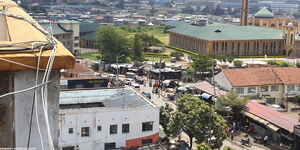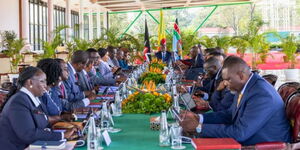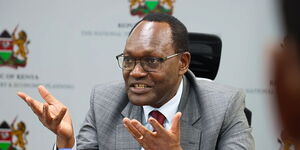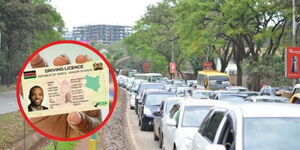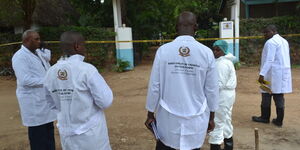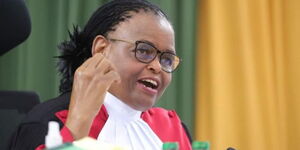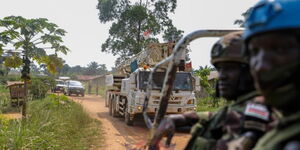The Kenya Defence Forces (KDF) has traditionally been touted as a premier peacekeeping force of international repute. Kenyan soldiers have provided both gunslingers and intellectual muscle for peace efforts globally under the blue helmet of the United Nations (UN).
In 1989, Kenya had deployed its soldiers under the command of Lt. General Ishmael Opande, to Namibia, as part of the United Nations Transition Assistance Group (UNTAG) mission. The primary goal of this mission was to oversee the transition of Namibia from South African rule to independence.
In his autobiography titled In Pursuit of Peace in Africa, General Opande who doubled up as Kenyan Contingent Commander recounts that while serving in Namibia as Deputy Force Commander for the entire UN force in Namibia, the Kenyan Army was assigned critical mission duties.
These included; protecting vital installations and infrastructure including barracks, offices, and logistic bases.
The Kenyan Army was exclusively trusted to provide VIP protection for all eminent persons arriving in Namibia. The soldiers were also assigned the duty to protect the military installations of the dismantled South West Africa Territorial Forces (SWATF).
SWATF was a second branch of the South African Defense Force (SADF) that, from 1977 until 1989, made up the military forces of South West Africa (now Namibia). It resulted from South Africa's political authority over Namibia. South Africa had been granted administration rights over the territory by the defunct League of Nations shortly after World War I.
On 31st March 1989, General Opande received a military intelligence briefing that South African Defense Forces, at the behest of the apartheid regime that ruled South Africa, were marshaling to deploy fresh troops to Northern Namibia to combat indigenous rebel militias that wanted to bring an end to the apartheid government rule in Namibia.
At the time, a peace negotiation was ongoing and the South Africans had committed to sending their troops back to South Africa to allow for the disarmament of armed volatile actors in Namibia. They were, however, planning an offensive advance that would not only jeopardise the peace process, but also put in firing range, the UN peacekeepers whom he commanded.
Aware of the repercussions of new hostilities to the peace process, the top Catholic priest who was Vicar General also alerted General Opande of the South African Army's movements.
Attempts to get clarification from Pretoria where the SADF was headquartered proved futile. The then liaison denied any knowledge of troop movements. On April 1, the same year which was a weekend, the initial shots were fired and the peace process scuttled.
Employing diplomatic measures as per the training manual, General Opande held a meeting with senior civil and military administration from South Africa. They met then the minister for Foreign Affairs, Pik Botha, Defense minister, General Magnus Malan, and SADF boss General Geldenhuys.
It was then that former British Prime Minister Margret Thatcher's diplomatic maneuvers came into play.
Thatcher, arrived on a quick visitation to assess the morale of the British Army contingent deployed in Windhoek serving as part of the peacekeeping troops under General Opande's command.
General Opande recounts her arrival as a blessing in disguise which was much needed for the peace at the time.
At the meeting, a senior RSA minister suggested that a full-scale military action was the right approach to take, a proposal that Opande recounts Thatcher flatly rejected.
"She strongly objected and warned South Africa about escalating the conflict. Mrs. Thatcher asserted that South Africa had no right to unilaterally go it alone in solving the Namibian crisis. Any requests to contain the crisis in the North, she insisted, must be presented to the UN Security Council which had the mandate to deal with the Namibian crisis," reads the autobiography.
In that meeting, it was decreed that a fact-finding team comprising of top military brass should head out to the border regions to quell the situation.
On 8th April, a week after the fighting, General Opande set out to chart the way forward in an emergency meeting that involved South Africa, Angola, Cuba, USSR and the US. He credits this meeting at Mount Etjo, a military complex in Angola as the beginning of the process that led to a ceasefire.
Namibia achieved its independence from South African administration on March 21, 1990.
Despite their best efforts to find peace, 27 South African soldiers lost their lives that week to gunfire.



